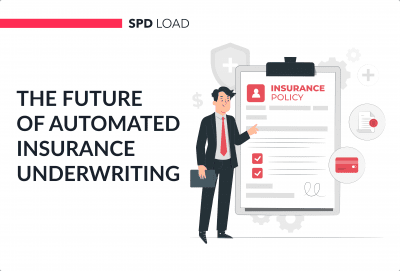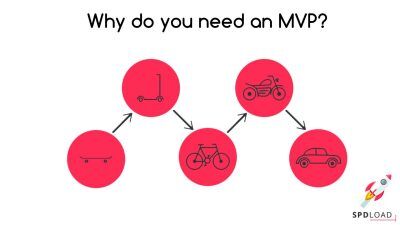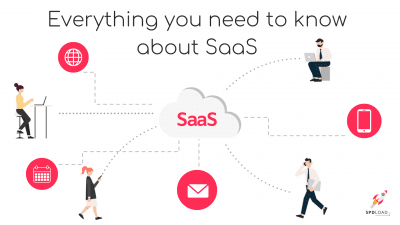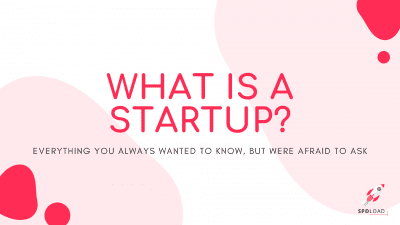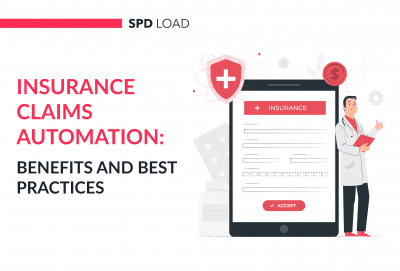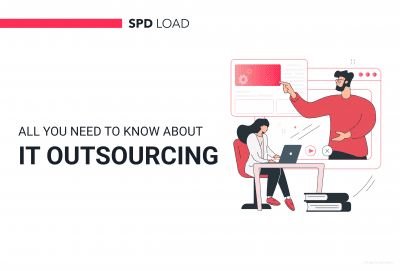Email Marketing for Startups: Strategies and Tips
- Created: Apr 29, 2025
- 10 min
Startups and small businesses operate in a crowded marketplace. The Startup Genome 2024 report highlights that there are over 150 million startups in the world, and about 50 million new startups are launched every year. That’s more than 137,000 startups per day globally.
In such an oversaturated environment, how can a startup stand out and win this competition for limited customer attention? The answer is: with the help of creative marketing.
Email marketing provides a strategic opportunity for resource-constrained startups that aim for rapid growth. As more entrepreneurs pursue startups, email delivers a proven channel to engage users and drive viral growth cost-effectively.
This guide shares insider tips and current best practices for startup email marketing success:
- Grow your subscriber list
- Create captivating campaigns
- Optimize for engagement
- Avoid common mistakes
Follow our playbook to make email marketing a growth engine for your startup this year.
Get your startup noticed with custom templates that grab attention and get you more customers.
Benefits of Email Marketing for Startups
Building a startup from scratch is only one of the first steps to success. The other part of the journey is marketing your product and showcasing why it is worth using it. This is what an email marketing strategy is used for.
Let’s take a look at all the benefits email marketing can bring to your business:
- Delivers better brand recognition.
- Builds your online business reputation.
- Develops client relationships and customer loyalty, usually long-term.
- Reaches a wide target audience.
- Increases conversions.
- Drives sales and boosts revenue.
- Grows web traffic.
- Considered the most cost-effective digital marketing strategy.
Seems like a lot of benefits, right?
If you are convinced to include emails in your marketing strategy, we have a full guide prepared to help you achieve the best results and grow your start-up.
Email Marketing Best Practices For Startups
Before you send your emails, make sure you understand email trends.
It’s important to have your research done and tactics set in place; otherwise, you might not be able to achieve the results you want.
You should also focus on creating strong passwords and ensuring email security for the long term.
Take a look at the following tips and start developing your email marketing campaigns, and use a password checker to be sure that you’ve done well.
Before You Get Started
To create your email marketing campaigns, you will need great email marketing software to ease your job and help your emails be effective.
Good email marketing software automates time-consuming tasks like list management, segmentation, and performance tracking, making campaigns much easier to run. It also offers tools like templates, A/B testing, and analytics that help improve email design, timing, and personalization — all critical for better engagement and results. Without strong software, it’s much harder to scale campaigns and optimize them for success.
ActiveCampaign is one of the helpful AI tools for startups. This is a great email marketing software for startups. It helps you to keep in touch with your customers quickly and easily, and grow your business by being cost-effective.
You can access the email templates library, analytics, drag and drop editor, and benefit from all the features available within their user-friendly interface.
Step 1: Build Your Email List
Your email marketing efforts should start with establishing the right audience.
Create an email list that will look like a library of email addresses that you have collected over time.
To gather them, you may want to use your website, landing pages, blog, social media, or any other marketing channel.
You can use the email marketing platform like Clearout Email Finder to find pre-verified email addresses of prospects with AI-based confidence scores against each email being found, or check the credibility of your own list with an email verification tool.
Once you have a list of website visitors who might be your potential customers, segment them based on their needs and demographics.
It will help you to approach them in a way that they would be keen to open your cold email.
Segmentation will not only help to increase the clicks on your email but also help you to develop a relationship with your customers, as you will only send them content that is relevant and appropriate.
Step 2: Set Goals for Your Email Campaigns
It is important to set specific goals, so you can evaluate the effectiveness of your email campaign.
This could include things such as a sales and revenue increase, website traffic growth, or paid subscription list improvement.
In fact, the global email market is expected to reach nearly $18 billion by the end of 2027, according to the Global Email Marketing Industry Report.
With the market expanding so fast, startups that build strong email strategies now can grab a bigger share of attention before competition gets even tougher. 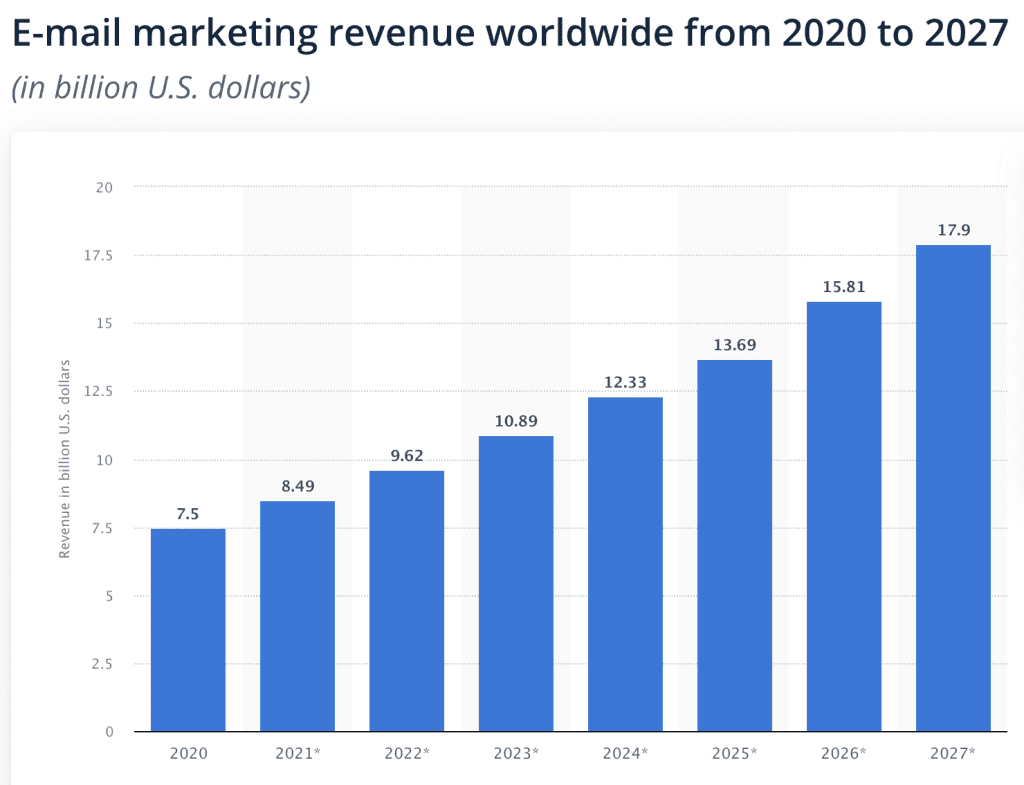
Once your objectives are set, you are able to create content and identify key metrics that will make these goals a success.
Do not forget that your audience needs engaging content that provides value, such as promotional offers, exclusive collections, or any other segmented information that is relevant to your potential buyer.
You can also consider partnering with an email marketing agency that can help create compelling and personalized messages to deliver this valuable content directly to your potential buyers’ inboxes.
Step 3: Choose Your Email Frequency
The frequency of your newsletter depends on the type of content you are sending out.
Since your emails need to be informative and valuable, it might take you some time to produce the content that will have high click-through rates.
However, if your objectives involve sales and revenue increase, you may want to send some promotions and offers more frequently to increase purchases.
When it comes to selecting the right time to send your email, you should consider the demographics of your target market.
The best way to find out the greatest timing is by testing and evaluating the results.
However, bear in mind that if your content is of low quality, it might reduce your subscriber list.
On the other hand, if you send your newsletters rarely, you might lose touch and relationships, so make sure you find the perfect time and frequency that would work efficiently for your start-up.
Step 4: Avoid Getting Flagged as Spam
If your company’s emails are constantly marked as spam by many recipients, your emails will no longer be able to reach large numbers of people.
That is why the establishment of the right frequency and timings might help.
You will be able to detect email spam and prevent it, plus any further inconveniences it might cause.
Also, try to avoid ‘spammy’ words and phrases that might cause your subscribers to send you to spam without even reading the content in your newsletter.
Attempt to avoid trigger words such as shopper, clearance, order, earn/make $, online biz opportunity, claims, cash, stock alert, etc.
Another reason why your emails may go to spam is the “no DMARC record found” error.
Regularly check your DMARC reports to make sure the domain security is on point.
Email Content Tips For Startup Growth
Once you have clearly established your marketing goals, objectives, collected the list of potential customers that you can approach, and decided on the frequency.
It is time to think of ways to improve your newsletters and make the content worth checking out.
Here are a few ideas on how to engage your subscribers:
Use Catchy Subject Lines
It is the first thing your recipient will see, so make it count!
You can use the subscriber’s name to attract attention or add relevant emojis to your subject line to make your email more compelling and interactive.
Besides that, it has been proven that emojis are increasing the opening rates, so why don’t you try to use one for your next email newsletter?
Check for some further inspiration and guidance on the subject lines here.
Personalize Your Newsletters
Personalizing your emails to meet your consumers’ needs has proven to be effective when it comes to opening rates, click-throughs, and call-to-action.
With developed customer segmentation, you will have a chance to increase your brand loyalty, enhance the customer experience, create relationships, improve customer retention, and boost your sales and revenue.
The benefits of well-prepared personalized emails are very valuable, so you may want to treat your subscribers with content that will be specifically designed for them.
Consider sending special offers, promotions, abandoned cart reminders, testimonials, surveys, and messages that are individual to each recipient and have a better chance of being opened.
If you are out of ideas, you might want to check some newsletter templates that will provide you with some great content options.
Optimize for Mobile Readers
Mobile devices are taking a huge part in everyone’s lives.
Consumers tend to use mobile phones for everything, including emails.
46% of all opened emails come from mobiles, so there is a huge opportunity here.
Create newsletters that will look nice and attractive, not only in a desktop version but also on a phone.
With the help of mobile marketing, you will also be able to collect valuable data, allowing you to target your audience effectively and segment them further by considering more demographic details.
You will be able to create your buyer personas and approach them with more appropriate, customized content and messages.
Every startup needs a marketing strategy. Check out how to set marketing objectives correctly to reach your audience. 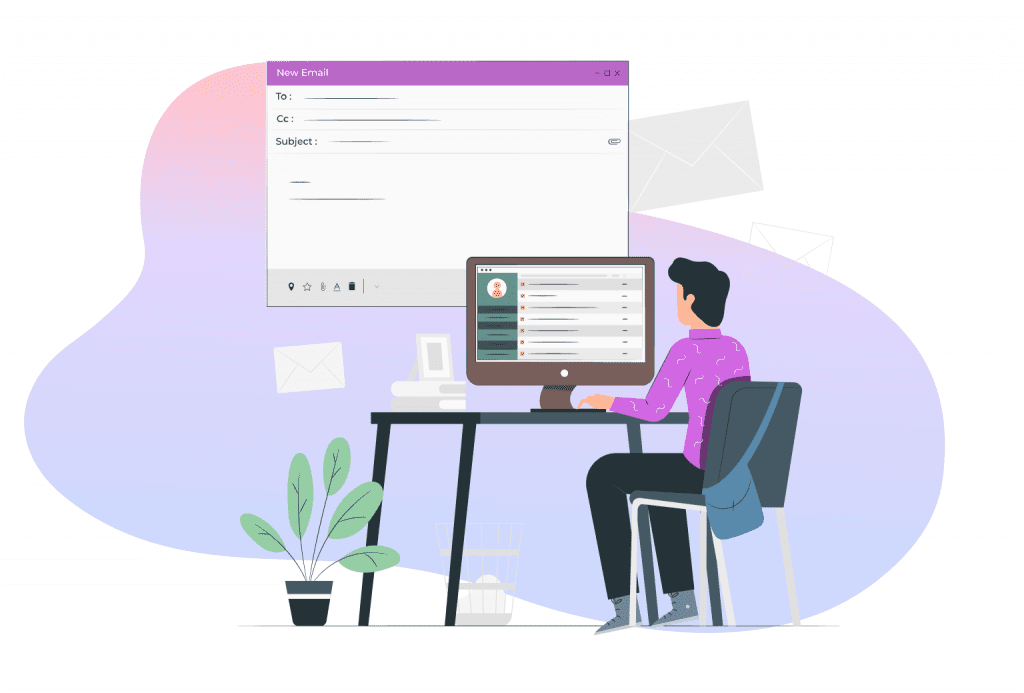
Email Marketing Plan Example
Creating an effective email marketing plan for a startup requires a structured approach to build brand awareness, engage potential customers, and drive conversions. Here’s a step-by-step breakdown:
1. Define Goals & KPIs
Start by setting clear objectives:
- Brand awareness (open rates, list growth)
- Lead generation (sign-ups, downloads)
- Customer engagement (click-through rates)
- Sales/conversions (purchase rate, ROI)
Example KPIs:
- Open rate (industry avg: ~20%)
- Click-through rate (CTR) (~2-5%)
- Conversion rate (~1-3%)
- List growth rate
2. Understand Your Audience
- Segment your audience (e.g., leads, customers, inactive users).
- Create buyer personas (demographics, pain points, interests).
- Use surveys or analytics (Google Analytics, social insights) to refine targeting.
3. Build an Email List
Organic methods:
- Website sign-up forms (pop-ups, embedded forms)
- Lead magnets (free eBooks, discounts, webinars)
- Social media promotions
- Referral incentives
Avoid buying email lists (hurts deliverability & trust).
4. Choose an Email Marketing Platform
Some of the most popular startup-friendly email marketing platforms include:
- Mailchimp (free tier)
- Brevo (Sendinblue) (scalable)
- HubSpot (CRM integration)
- ActiveCampaign (automation)
5. Email Types & Cadence
| Type | Purpose | Frequency |
|---|---|---|
| Welcome Series | Introduce brand, set expectations | 3-5 emails (over 1-2 weeks) |
| Newsletters | Engage with updates, tips | Weekly/Bi-weekly |
| Promotional | Discounts, product launches | 1-2x/month |
| Abandoned Cart | Recover lost sales | 1-3 follow-ups |
| Re-engagement | Win back inactive users | Quarterly |
6. Craft High-Converting Emails
Subject Line: Short, urgent, personalized (e.g., “Your 20% off ends tonight!”).
Preview Text: Tease content to boost opens.
Body:
- Clear, concise, scannable (bullet points, short paragraphs).
- Strong CTA (“Shop Now,” “Download Guide”).
- Mobile-friendly design (60% of emails opened on mobile).
Personalization: Use names, past behavior (e.g., “Recommended for you”).
7. Automate & Optimize
Automation workflows:
- Drip campaigns for onboarding.
- Post-purchase follow-ups.
A/B test subject lines, CTAs, send times.
Track performance and refine based on data.
8. Compliance & Best Practices
- GDPR/Can-SPAM compliance: Include unsubscribe links and a physical address.
- Avoid spam triggers (excessive caps, spammy words like “FREE”).
- Clean your list regularly to improve deliverability.
Example 30-Day Email Plan for a Startup
| Day | Email Type | Goal |
|---|---|---|
| 1 | Welcome + Discount | Convert sign-ups to customers |
| 3 | Educational Content | Build trust (blog, tips) |
| 7 | Product Demo/Testimonial | Show social proof |
| 14 | Limited-Time Offer | Drive urgency |
| 21 | Re-engagement | Win back inactive users |
| 30 | Feedback Request | Improve product/service |
Budget & Tools
- Free tier tools (Mailchimp, Brevo) for early-stage.
- Paid ads for list growth (Facebook Lead Ads, Google Ads).
- Allocate ~10-20% of the marketing budget to email efforts.
The Most Common Email Marketing Mistakes to Avoid
We have now covered the basics of email marketing for startups. Hopefully, these insights will help your start-up get into email marketing and enjoy its benefits. However, there are common mistakes to be aware of when it comes to email campaigns. Here are some of them:
1. Poor list building and management
- No subscription form, or forms that are hard to find or lack clear value, make it difficult to grow your list with engaged subscribers.
- Using outdated or low-quality email lists, failing to remove inactive contacts, or not segmenting your audience leads to poor deliverability and low engagement.
2. Lack of segmentation and targeted emails
- Sending the same generic message to your entire list ignores differences in interests and behaviors, reducing relevance and engagement.
- Forgoing personalization, such as not using names or tailoring content, makes emails less appealing and can increase unsubscribe rates.
3. Weak or unclear subject lines
- Boring, vague, or cut-off subject lines fail to capture attention and can drastically reduce open rates.
- Not testing subject lines across devices can result in important information being missed.
4. Ignoring mobile optimization
- Emails not optimized for mobile devices are difficult to read and interact with, causing frustration and lower engagement rates.
5. Sending from “noreply” addresses
- Using a “noreply” sender address discourages interaction and can make your brand seem unapproachable, potentially harming deliverability.
6. Poor timing and frequency
- Sending emails too frequently or too rarely can annoy subscribers or make them forget about your brand, leading to higher unsubscribe rates.
- Not allowing subscribers to set preferences for frequency and content can also hurt engagement.
7. Neglecting welcome and re-engagement emails
- Failing to send a welcome email leaves new subscribers feeling unappreciated and unclear about what to expect.
- Not having a re-engagement strategy for inactive subscribers means missing opportunities to win them back.
8. Lack of clear call to action (CTA)
- Emails without a clear, prominent CTA leave recipients unsure of what to do next, reducing conversions.
9. Unprofessional or inconsistent design
- Poorly designed emails, inconsistent branding, or visually cluttered layouts can make your messages look unprofessional and hard to read.
10. Ignoring legal requirements
- Failing to comply with email marketing laws (like GDPR or CAN-SPAM), not including opt-out options, or sending without consent can result in legal trouble and damage your reputation.
11. Not Testing and Measuring
- Skipping A/B testing, not tracking key metrics, or making decisions without data leads to missed optimization opportunities and underperforming campaigns37.
12. Overly salesy or off-topic content
- Focusing only on sales emails or sending irrelevant content can alienate your audience and increase unsubscribes.
Avoid these common mistakes to build a successful, engaging, and legally compliant email marketing program that delivers real value to your business and subscribers.
Looking for marketing support? Discover the key steps to outsourcing digital marketing effectively.
Get the Most Out of Your Email Marketing Efforts
Email marketing is a valuable channel for startups that want to reach users.
As you plan your startup’s email marketing, tap into our expertise in product discovery service and app development.
Our talented teams can help you identify, build custom software, or update the existing one, to integrate popular email marketing platforms into your product, and develop the technical infrastructure to manage email campaigns at scale.
Contact us to discuss how we can engineer the technology and infrastructure to make your startup’s email marketing strategy successful.
If you are just looking for a great idea for your new venture, see how to find an idea for a unicorn startup with market potential and scalability.




